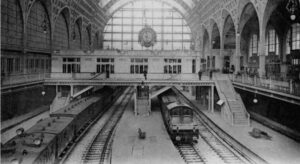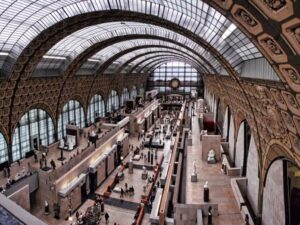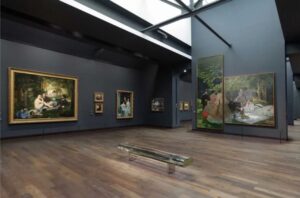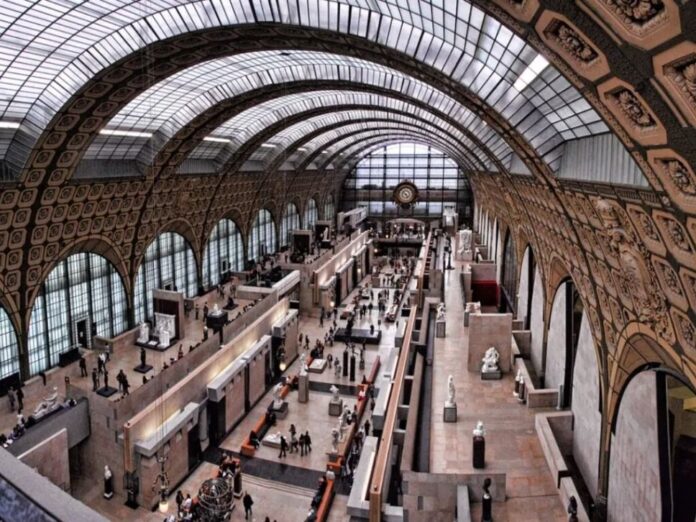The Musée d’Orsay in Paris is located inside an old station and is known throughout the world for being the home of the Impressionists.
A STATION as a MUSEUM: in Paris the “house of the Impressionists”
# The history of the Orsay station

Orsay station was built for the Universal Exhibition in Paris in 1900. The project was entrusted to Victor Laloux and the goal was to create an even larger and more central station than the Gare d’Austerlitz.
For the project, a land was chosen on which originally stood the cavalry barracks and the Palazzo d’Orsay, first seat of the Court of Auditors and then of the Council of State, which have now become ruins after the fire in 1871 during the Paris Commune .
On July 14, 1900, after only two years of work, the inauguration of the Orsay station was held: a huge 32-meter-high metal vault designed the skeleton of the structure, in a modern style.
The Gare d’Orsay served as a train station efficiently but not for long. In a short time it became obsolete compared to the other stations and, at the end of the 1950s, it fell into disuse and was abandoned.
And here we come to the decision that will change the history of Paris: what to do with this impressive metal structure?
# The old station becomes one of the most visited museums in the world

Among the options for this mammoth and fascinating structure there was also the demolition to build a hotel but, fortunately, someone objected.
In 1973 the management of the French museums launched the idea: to set up a museum dedicated to the art of the second half of the nineteenth century inside the former station.
Winning this debate was the president of the republic Valéry Giscard d’Estaing so, in 1978, the Orsay station was inscribed in the list of historical monuments and a foundation was established to start construction work on the museum.
The project was entrusted to the ACT-Architecture studio, with the precise order to adapt only the original structure of the station, without distorting its shapes and image.
On 1 December 1986, President François Mitterrand officially inaugurated the Musée d’Orsay, and on 9 December the new institute began to welcome the public.
When the station was transformed into a museum, the installations were designed by Gae Aulenti, in collaboration with Italo Rota, Piero Castiglioni and Richard Peduzzi.
As Gae Aulenti explained: “The principle was to protect the identity of the Laloux building as best as possible without renouncing the identity of the contemporary building”.
No one would have ever imagined that that old station would become one of the most visited museums in the world.
# The house of the Impressionists

The museum’s collections are located on three floors and includes more than 4,000 works.
There are six fundamental collections: painting, sculpture, art objects, photography, graphics and architecture.
The painting collection of the Musée d’Orsay originates from that of the Musée de Luxembourg, established in 1818 by King Louis XVIII, with the aim of documenting the painting of contemporary artists, whose works were purchased by the Salon.
Initially, the Luxembourg therefore only hosted artists who painted according to the official taste.
We have to wait until the end of the nineteenth century to see works by more innovative artists such as Édouard Manet, Claude Monet, Pierre-Auguste Renoir, Camille Pissarro, Alfred Sisley, Courbet, Millet and many others.
The Musée d’Orsay in Paris is now considered the home of the Impressionists.
ARIANNA BOTTINI











